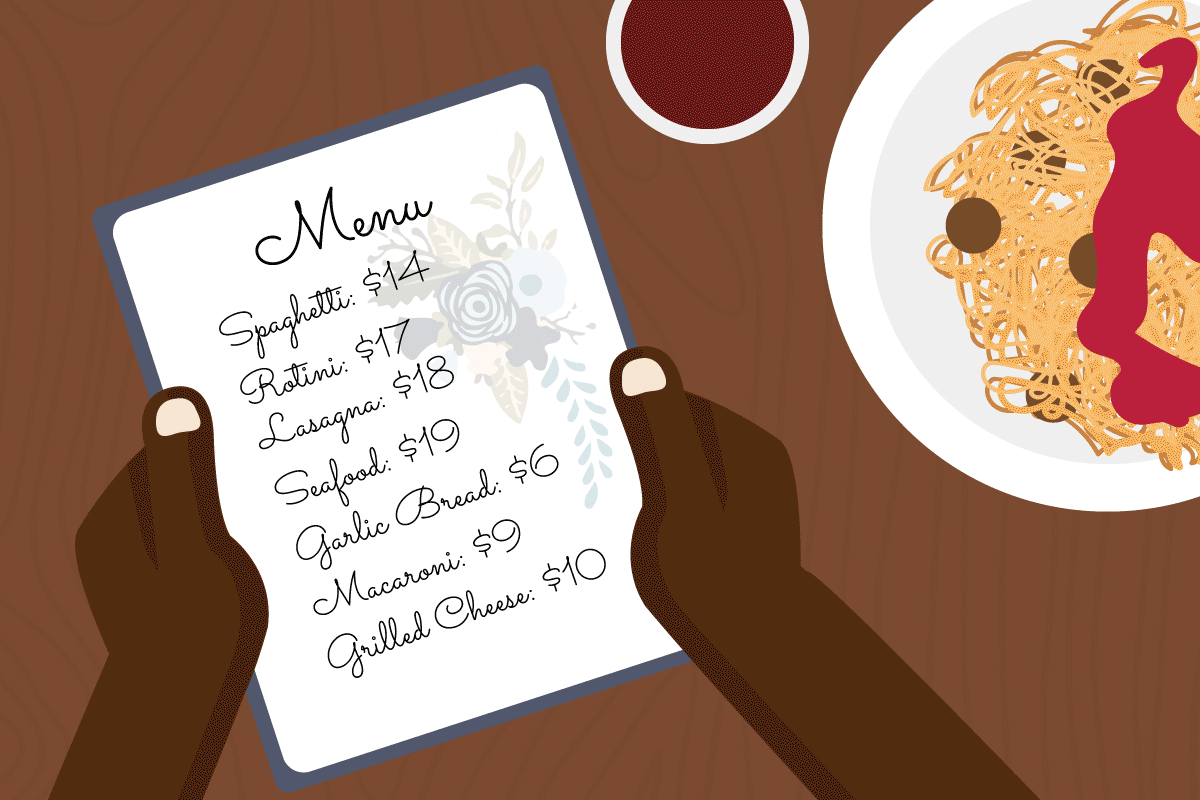This Is How Restaurants Trick You Into Overspending Every Time You Dine Out

Next time you look at the menu at that trendy new restaurant that opened on your block or an old favorite, you should know something: The menu is plotting against you and your wallet.
Every color, photo, mouthwatering description, font and even item placement was strategically chosen to get you to spend as much as possible.
Now, don’t get us wrong. We understand why.
A restaurant is a business. Every dollar you spend helps keep the doors open, and your favorite servers and bartenders paid. But that doesn’t mean you have to bankroll the whole operation.
Of course, splurging on a night out every now and then is no big deal. But if you’re finally going to start building that emergency fund, you’re going to have to be savvy about your spending.
We did some research to find the most common tricks you’ll find on restaurant menus so you don’t fall for them.
If There Are No Dollar Signs, Are You Really Spending Money?

When you think about grabbing dinner with friends, you shouldn’t have to be bogged down with the thought of your bill before it even comes.
At least that’s what restaurant managers hope for when they drop the dollar signs from their menus.
When you see a menu without dollar signs, you might not think much of it, assuming you notice it at all. But the missing dollar sign could make you overspend, according to a 2009 Cornell University study that analyzed customer spending habits based on price presentation on a menu.
The study compared prices written in three ways: numerals with dollar signs (e.g., $20.00), numerals without dollar signs (20.00) and prices written out in words (twenty dollars).
The study found that restaurantgoers spent more when prices were written in numerals without dollar signs, presumably because the mention of dollars, whether in words or symbols, was a reminder of how much they were spending.
Pimping ‘Grandma’s’ Recipe for Profits

Another Cornell University study explained why restaurants use descriptive language when naming menu items. You guessed it — to get you to spend more.
This is exactly what researchers expected to happen, and they confirmed their expectations in a study that spanned six weeks. The researchers changed the names of six menu items in a university cafeteria.
For example, simple “Chocolate Pudding” was renamed “Satin Chocolate Pudding.” “Seafood Filet” became “Succulent Italian Seafood Filet.” And “Zucchini Cookies” was changed to “Grandma’s Zucchini Cookies.”
Those changes resulted in a 27% increase in sales for the descriptively named items. Patrons believed the food with descriptive names was of higher quality and a better value. They were also more likely to say they would eat the menu item again within two weeks.
What a Difference a Penny Makes

The menu tricks don’t stop at fancy names and dollar signs. They can impact the price of specific items, too. You can see these tactics everywhere, from fast-food restaurants when you’re out for a quick bite to the swanky spots you reserve for special occasions.
According to a 2001 study by researchers S. Naipaul and H.G. Parsa titled “Menu-price Endings That Communicate Value and Quality,” pricing can connote quality or a bargain depending on where you eat.
The study found that when eating out at a less expensive restaurant, guests are more likely to feel like they are getting the best bang for their buck when they choose items with a price ending in nine.
However, at a more expensive fine dining restaurant, patrons are more likely to believe that the meal they plan to order is higher quality if the price ends in a zero.
That means customers at cheaper restaurants may overlook a less expensive $7 option and opt for the $8.99 platter, while someone eating at a fine dining restaurant may opt for the $30 entree over the $27.99 meal — assuming the restaurant dropped the dollar signs, of course.
Penny Hoarders Are Less Likely to Fall for Restaurant Menu Tricks
While you may not want to let your guard down the next time you dine out, there is a bit of a silver lining for folks like us: The Cornell University study that analyzed how restaurants use dollar signs found that these tricks were least effective on diners who already watched their wallets.
“Tightwads and penny-pinchers” (hey, we prefer “Penny Hoarders”) who were already cash-conscious were less likely to overspend because of a dollar sign disappearing act.
And the same goes for descriptive names, and nines and zeros. While little changes could make it more likely for some customers to order one menu item over another, tightwads like us will only buy those items if the price feels right.
Desiree Stennett (@desi_stennett) is a staff writer at The Penny Hoarder. She spends more on food each month than almost everything else.


















